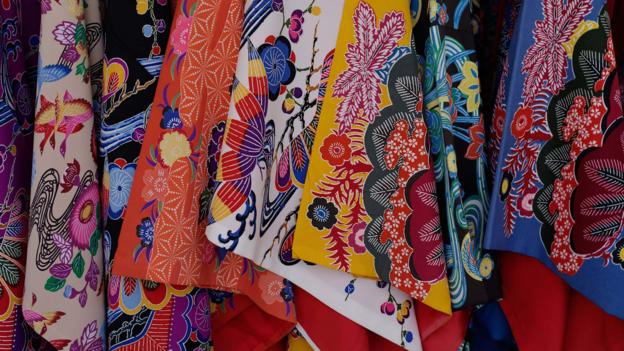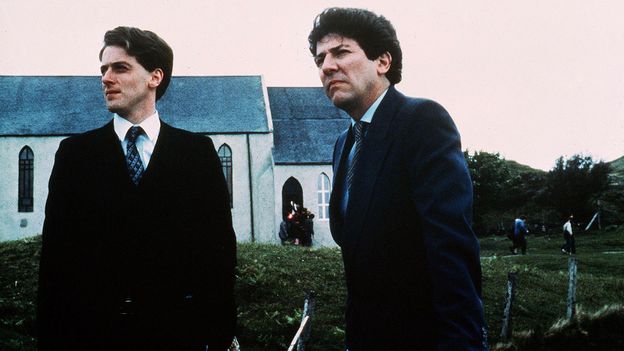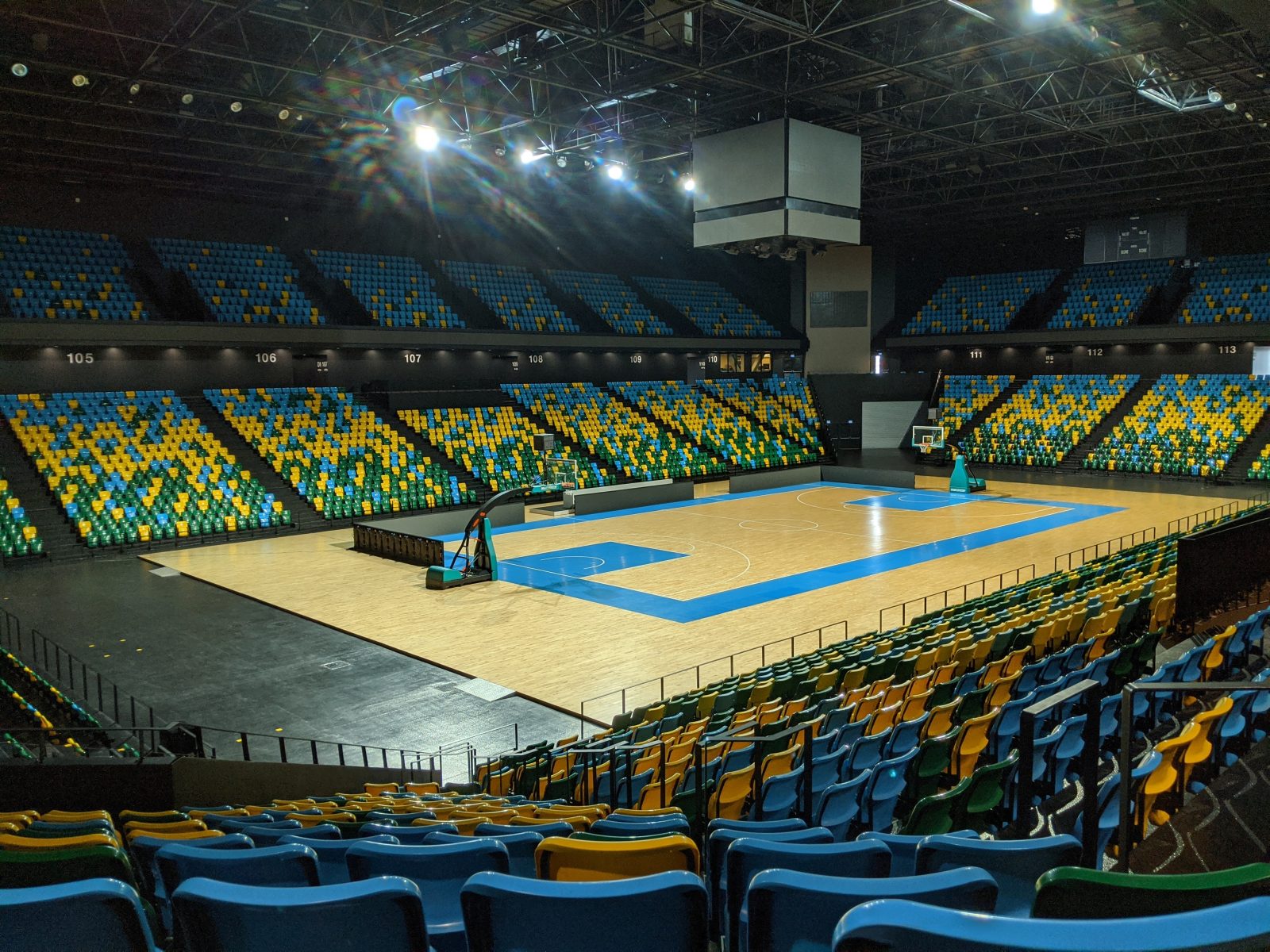Culture
Kimono: from status symbol to high fashion

From a first visit to the shrine to coming of age and marriage ceremonies, the kimono plays an integral role in Japanese society. It is worn at key moments in a person’s life as well as being donned for traditional occasions such as the tea ceremony. If meticulously handcrafted by the finest makers, their value can run to thousands of pounds, and they are reverently handed down from generation to generation. To western eyes they are the ultimate symbol of Japan, often infused with an exotic fascination derived from misconceived ideas about the geisha.
Given the kimono’s iconic status it is easy to forget that for the greatest part of their history they have also been a fashion staple, worn on a daily basis by the majority of the population. Only after the enforced opening of Japan’s borders by the United States in the late 19th Century did the kimono begin to take on a more symbolic role, a shift that reached its apogee in the aftermath of the Pacific War (1941-45) when, defeated and demoralised, the Japanese largely abandoned the kimono in favour of Western fashions.
“As its actual wearing decreases, so its symbolic status expands and it comes to stand for Japan in a globalised world,” says Anna Jackson, curator of Kimono: Kyoto to Catwalk at the Victoria & Albert Museum in London.
However, since the 1990s there has been a growing interest in kimono amongst a younger generation of Japanese with numerous magazines, blogs and Facebook groups fuelling this revival. Kimono is once again being seen on the streets of Japan, proving that far from being a static icon it is a dynamic, fashionable, garment whose use and significance has ebbed and flowed with the tides of history.
Status symbol
The kimono first gained sartorial significance during the Edo period (1630 – 1868). After centuries of civil war and unrest this was an era of unprecedented political stability, economic growth and urban expansion. In the past, the samurai, Japan’s ruling military class, had gained their status and wealth from success on the battlefield. Now this was increasingly emphasised via appearance.
Samurai women led exceedingly restricted and structured lives which included a strict adherence to dress codes based around season, events and the time of day. As Western nobility and Royalty would have an elaborate ensemble for every occasion, so the samurai women would have a richly embroidered and printed kimono for theirs.
As its actual wearing decreases so its symbolic status expands – Anna Jackson
Despite being prolific consumers of sumptuous kimono, samurai women were rarely innovators. Instead it was the newly wealthy merchant class who, unable to enhance their social status due to the strict hierarchical nature of society, chose to show off their style and confidence via their dress. “They were the ones that really pushed new styles and techniques,” says Jackson.
This increasingly fashion-conscious society had its own taste-makers in the form of kabuki actors and courtesans. Their latest stylistic innovation would be disseminated via inexpensive woodblock prints to an eager public keen to emulate their idols.
The kimono may not have had the symbolic value it later acquired but it was intended to act as a signifier of status. When the merchant classes appeared to be getting above their station, the ruling elite would issue sumptuary laws. “They restricted certain colours, certain dyes, and you weren’t supposed to wear silk,” explains Jackson.
Although not strictly enforced and often ignored, these rules proved the catalyst for subversive developments in kimono fashion which enabled the wearer to subtly convey their wealth and discernment.
“Suddenly anyone with taste turned to small scale details, so you’d have a plain kimono with a flashy lining or something in grey or brown which, when you looked closely, was intricately patterned,” says Jackson.
When the sumptuary laws were more rigidly upheld in the late 18th and early 19th Century, the women who epitomised this chic, understated style known as iki were the geisha. Forbidden from competing with the courtesans, they had honed the art of restrained elegance. A fact which will undoubtedly surprise those more familiar with the flamboyant styles they later adopted.
Back in fashion
The kimono’s slow shift towards the symbolic began after Japan was forced to open its borders to foreign trade. In the turmoil that followed, the new Emperor Mutsuhito brought the rule of the military elite to an end and swept the old feudal system away. The new era known as Meiji (1868-1912) meaning ‘enlightened rule,’ would concentrate on building a modern, industrialised and militarily powerful state.
Although the Emperor and his court, including some high-ranking women, initially adapted Western dress, by the 1890s there was something of a kimono renaissance. This was part of a broader resurgent of nationalism resulting from growing political, economic and military confidence. While striving to show itself as equal to the West, Japan also wanted to emphasise its unique cultural heritage. There seemed to be no better way for this than through refined, demure women wearing kimono.
The kimono became rigid, formalised attire
The repeal of the sumptuary laws combined with new dying techniques and materials made innovative, exciting kimonos available to a larger clientele than ever before. Geisha, who had been some of the first to adapt Western clothing, now saw that the future lay in wearing fabulous kimono, and rebranding themselves as the embodiment of “old Japan.”
In the early decades of the 20th Century some fashion-conscious women wore divine Art Nouveau and Art Deco inspired kimonos styled with Western shoes and accessories. But complete westernisation was frowned upon. Women had come to personify Japanese morality and they could only do that while wearing kimono.
It took the utter devastation of the Pacific War to bring to an end to centuries of everyday kimono wearing. With their country and moral in ruins the Japanese saw Western clothing as the simplest option.
“Because that generation after the war grew up not wearing it (on a frequent basis) that link of the mother teaching the daughter, or just putting it on the daughter until she could put it on herself was broken,” says Sheila Cliffe, Professor at Jumonji Gakuen University and one of the first non-native Japanese people to hold an official kimono dressing and teaching licence.
Kimono businesses responded by creating schools in order to teach Japanese women how to wear kimono. But “once you have schools you make a right way and a wrong way to do it,” says Cliffe. The kimono became rigid, formalised attire worn only on significant occasions by a wealthy middle-class elite.
At the same time, it was used as a potent soft power tool to rebrand Japan in the aftermath of the war. Kimono clad women, seemingly ever ready to please, became an essential feature for companies seeking to regain trust. An American PR company suggested that Japan Airlines have kimono clad air stewardesses to emphasise Japanese hospitality. Although this somewhat ridiculous suggestion was rejected on the grounds of air safety, the airline felt enough pressure to pander to the Western gaze that it adopted the custom of a single stewardess wearing kimono during its first-class cocktail service.
It was used as a potent soft power tool to rebrand Japan in the aftermath of the war
This imagery, combined with the stranglehold of the kimono schools, meant that the kimono held little appeal for everyday wear.
The next generation
Things only began to change in the late 1990s, in part because of a global interest in Japanese culture which encouraged Japanese people to reassess their own heritage. “Young people started to wear yukata (casual summer kimonos) for firework displays or Natsu matsuri (summer festivals),” says Rie Nii, curator at the Kyoto Costume Institute. And instead of traditional footwear they wore fashionable platform sandals, ignoring the rigid rules of the kimono schools. “For them, yukata were exotic clothing and it is possible to say that it was a kind of street fashion. In my opinion this turned the tide,” she says.
Cliffe has noticed a decided resurgence in interest since the turn of the century. She has taken part in ‘Kimono Jack’ events in which kimono wearing enthusiasts literally hijack a public space to make their love of kimono visible. Some of these gatherings have been so large that they have had to be moved on by police. More discreet are the kimono wearing groups who “gather together and wear it, talk about it and enjoy it,” says Cliffe.
Kumiko Ishioka has a Facebook page on which kimono wearers from all over the world can connect to share their enthusiasm. Like many she first wore kimono for formal occasions. But in her 30s she found a second-hand kimono for 5000 yen ($44.80; £34.74). “I wore it for lunch with friends. After that I tried to look for as much information on kimono as possible,” she says.
Initially kimono looked exotic to her but as she read more about them in the new magazines that catered to the renewed interest she “understood that kimono is not just an icon or a traditional garment.” “Kimono connects me with my ancestors who lived as a wife, a woman, a daughter. Like me in olden times,” says Ishioka. She now wears kimono when she goes out to the theatre or concerts, to parties and when meeting friends.
Ishioka believes that fashion magazines together with a vibrant second-hand market and the internet are the three key factors which have helped spread the kimono revival. “We can look at people who enjoy kimono freely, classically or traditionally, as they like,” she says. Those elements, together with a new, edgy breed of kimono designer have succeeded in putting the kimono back where it belongs – on the street, not on a pedestal.
Culture
Local Hero: Why the iconic Scottish environmental film was decades ahead of its time

[ad_1]

As it happened, Puttnam and Forsyth had their eye on Lancaster to star in the film from get-go. “The first thing that Bill had said to me when he delivered the screenplay was, ‘I’d like Burt Lancaster to play Happer,” says Puttnam. While securing Lancaster was crucial for the film’s international appeal, this proved extremely difficult as the star’s salary took up half of the film’s budget. It took a year of negotiating to get him on board.
Despite considering stars such as Michael Douglas and Henry Winkler for the role of Mac, Forsyth was set on casting Peter Riegert as the oilman who experiences an awakening and succumbs to the charms of the rugged Scottish landscapes. For the key part of Oldsen, the local guide who escorts Mac around Ferness, Forsyth chose Peter Capaldi, a then fresh-faced Scottish actor just out of art school.
Another integral element of the film is the score by Scottish-born Dire Straits frontman Mark Knopfler, who Puttnam suggested to Forsyth. While it is regarded as a key component of the film, underscoring shots of the Scottish coastline and the Northern Lights, it almost never came about.
“I heard his (Dire Straits) album Making Movies. So, I wrote to him, I got a letter from his manager who said, ‘Oh, that’s really, really interesting’. I got Mark and Bill to meet, Bill didn’t like Mark’s music, so it was a very tense meeting. But Bill liked one track, Telegraph Road. So, I managed to have a meeting where the only track we talked about was Telegraph Road. And, in the end, they got to like each other and they got to work together,” says Puttnam.
Ahead of its time
Released to immediate acclaim, the film was a major success in the UK and in the US, going on to be honoured as one of the top 10 films of the year by the National Board of Review in New York and launching the career of future Doctor Who star and multi-Bafta winner Peter Capaldi. Forsyth – who’d garnered praise for his 1981 sleeper hit Gregory’s Girl – won a Bafta for best direction. It was hailed as “a small film to treasure, a loving, funny, understated portrait of a small Scottish town” by leading US critic Roger Ebert for The Chicago Sun-Times, while Janet Maslin wrote in a glowing review in The New York Times, “Mr Forsyth has put Scottish comedy on the map”.
While Local Hero remains arguably the finest film to have come out of Scotland, perhaps its most enduring legacy lies in its prescient caution on the environment. Fully aware that going ahead with the oil plant will irrevocably damage their village, the locals of Ferness willingly agree to sell their land, rather than oppose the corporation – bar one holdout, a dogged old man.
Well before it was echoed in the incident of the Scottish farmer who refused to sell his land to Trump when he built his golf course, Forsyth’s film implored audiences to conserve the environment, to stand up and fight for it, and to contemplate how easily it can be destroyed.
In the willingness of the residents to sell their land, Forsyth urged viewers to consider the irreversible repercussions of environmental harm. Looking back on the seminal Scottish film 40 years later, Puttnam says he believes it was prescient and is his favourite of the films he has produced: “It was certainly a good 20 years ahead of its time.”
Love film and TV? Join BBC Culture Film and TV Club on Facebook, a community for cinephiles all over the world.
If you would like to comment on this story or anything else you have seen on BBC Culture, head over to our Facebook page or message us on Twitter.
And if you liked this story, sign up for the weekly bbc.com features newsletter, called The Essential List. A handpicked selection of stories from BBC Future, Culture, Worklife and Travel, delivered to your inbox every Friday.
[ad_2]
Source link
Culture
How We Behaved When COVID-19 Robbed Our Culture of Sports

If you’re like me, when the weight of politics, religious debates, and the monotony of mundane life seem to overwhelm the mind, watching sports is a way to recalibrate. So when the coronavirus began dominating headlines, I presumed sports would be the catalyst to put minds and emotions at ease. That vehicle of escapism came to an abrupt halt Thursday, March 12, 2020. This date will be forever remembered in history across the globe as the day sports were put on hold as a precaution to maintain the health of humanity.
So far in 2020, we’ve witnessed tragedy, chaos, and confusion ranging from the death of an NBA legend to the impeachment and acquittal of a U.S. President. And now, the coronavirus—AKA COVID-19—which is now labeled a global pandemic by the World Health Organization, has virtually shut down the staples of American entertainment.
What are we to do without our beloved sports? How can athletes come to grips with their careers halted and having way more time than usual before next season? And how might we respond in a tumultuous time filled with fear for an uncontrollable virus that affects us and our loved ones?
In this way, the COVID-19 pandemic is teaching us that close-knit, human-to-human and face-to-face communal gatherings—the kind we enjoy with sports—still matter.
No sport is unscathed from the coronavirus pandemic, and even as this is written, plans for particular leagues and franchises are fluid. Of course many other countries began halting or altering sporting events much sooner than the United States, but the scale at which this is now affecting the worldwide leader in sports entertainment is telling of the seriousness by which leaders are taking the matter. The chaos began when Dr. Anthony Fauci testified before Congress March 12 regarding the lackluster response our country was taking in regard to social gatherings and the impact it could have on our country’s well-being.
As a result, the NBA suspended its season indefinitely after Utah Jazz center Rudy Gobert and point guard Donovan Mitchell tested positive for the virus. Now, four Brooklyn Nets—including league MVP Kevin Durant—have also tested positive. The NHL postponed its season. NASCAR will have races without fans in attendance. Major League Baseball is canceling the spring season and will postpone opening day by at least two weeks. The NFL canceled their annual spring meeting and is altering plans for the 2020 NFL Draft. The PGA will tee off major tournaments without fans and postpone the annual Masters Tournament. The NCAA Basketball tournament—easily the hardest hit category with March Madness looming—canceled all 14 conference tournaments and the ensuing March Madness Tournament.
The initial response for many athletes is disappointment. As a coach and former college athlete, I know firsthand the amount of time, training, and dedication contestants pour into competition. It’s not easy to accept the loss of play that you’ve worked for all season—or even your whole career. And as a fan, now that sports aren’t available to distract me from this clamorous environment, I have to find other ways to cope. But as a believer, I have a much more important obligation than to wallow in disappointment and boredom.
This track and field season, the high school team I coach has an opportunity to compete for some significant individual and group achievements. For eight months, I’ve witnessed our athletes blossom into believers of each other, themselves, and the sport. Many were just beginning to buy-in to the reality that they could accomplish something beyond their wildest imaginations this year. And now our season has been put on hold—possibly canceled—and we have to put those dreams toward next season instead.
I wonder how our athletes will hold up with such a significant change. Will they be able to bounce back? Will they train on their own to come back prepared? Can they overcome this coronavirus obstacle while I am no longer by their side to motivate and coach them? But as a believer and a coach, I must remember that moments like these are opportunities to grow, to trust, and to remind our athletes that their identity isn’t in what they achieve or won’t achieve this season. What’s before us is an opportunity to remember our inherent value as image-bearers of God, which extends beyond the temporal vainglory of medals and trophies.
This is not to make light of the hard work and focus poured into their sport. In fact, many aspirations of being recruited for college or getting a professional contract rode on the performances of this season. The unfortunate loss of these opportunities are difficult to explain for those who’ve never performed in such extracurricular activities, but I assure you they hold a special place in the hearts of lifelong competitors. And if they hold such a place in the hearts of competitors, they are held almost as dearly to the fans.
Like I mentioned before, sports provide a steady rhythm for our American society. The year unfolds from one sport’s season to another, in a sort of liturgy we can all count on. It provides a recreational sense of escape when the burdens of the world are too much to bear. When all else seems to divide us, sports can bring people of different ages, races, genders, religions, and political affiliations together for a few hours at a time to gaze upon the beauty of equity through competition. Whether we’re for or against the same teams, the communal sense embedded in the rhythms of fandom provides us an expression and sense of self.
In this way, the COVID-19 pandemic is teaching us that close-knit, human-to-human and face-to-face communal gatherings still matter. “Belonging is our primary human need,” as Jeremy Linneman wrote for The Gospel Coalition. God rendered it so since He made mankind (Genesis 2:18). Our human connections—even those around a television, in arenas, or alongside teammates competing—is a basic necessity to feel human. Without these gatherings, part of our humanity is lost. We are created to gather and be in close-knit communities, because it’s the nature of our Creator. So even when we cannot gather around sports, we can look to the values we gain from these rhythms—these liturgies—to guide our reaction to the uncertainty caused by COVID-19.
Though we are aware of the situation and lament what is temporarily lost in this moment, competitors and fans can lift their eyes and focus their gaze beyond the fear and distress. Dayton Flyers basketball forward Obadiah Toppin, a front-runner for the Naismith Men’s College Player of the Year Award, was looking forward to putting his skills on the national basketball stage in this year’s NCAA Basketball Tournament. But with that reality stripped away, Toppin fixed his gaze on God in the midst of the ongoing confusion—and encouraged others to do so too—with this retweet:

Remembering what’s eternal certainly puts into perspective what’s happening day to day. But that doesn’t mean we adopt a laissez-faire attitude regarding the outbreak, such as exhibited by some leaders. Downplaying the virus’s contagion or chastising others who take the proper health precautions is not helpful, as our Italian neighbors regrettably learned. Some claim all the precautions by state and local governments are overblown and are ruining sports. Some even incite apocalyptic fear as reason to why the virus is spreading while encouraging church members to gather en masse as though the virus doesn’t even exist.
Throwing caution to the wind, however, is not prudent or wise. Considering that African Americans, people with underlying illnesses, and elderly populations are at a greater risk of death from the coronavirus should make us pause before doing whatever is preferred personally—not to act out of fear, but out of love and regard for our neighbors. If choosing to not attend crowded events that ramp up the spread of COVID-19 will lower the chances of spreading it to my 80-year-old grandmother or neighbor, that is a sacrifice worth taking. The immediate satisfaction of participating in a sport does not hold a candle to the health and vitality of human lives.
We need more people with others’ centered behavior, rooted in a greater hope, who will not succumb to anxiety and fears of the unknown, but who also act with wisdom and prudence. This is exemplified by President Scogin of Hope College, when he announced one of the college’s students was being tested for COVID-19. Scogin encouraged everyone first to pray and to not engage in gossip, belittling, or discrimination. He also presented clear guidelines about what the college would do practically to provide support for the students. And last, he reminded everyone that “we are a people of hope” and that “we can and we should respond to this differently than the rest of the world is responding to this… we prepare, we plan, and we pray.”
That simple, calm approach is what we need in this time of unknowns. While sports are no longer present to distract us or help us build the community we need, all is not lost. Sports have shaped us, our whole society, and now in its absence we can see it all the more clearly. Like any other good thing, sports can be elevated to an idol-like status in our hearts and our society. But the powerful good of sports—for athletes, coaches, and fans—cannot be denied. This momentary pause is a reminder to reassess its place for us individually and collectively. And it’s a time to be grateful for the joy it brings, giving witness to an everlasting hope in Jesus who is Lord over all.
Culture
Last Prisoner Project Facing Down COVID-19 Alone, But You Can Help

CANNABIS CULTURE – It’s critical that our response to this global Coronavirus pandemic protects our most vulnerable people – including our incarcerated communities.
Of the 2.3 million incarcerated people in the U.S., roughly 165,000 are over the age of 55. Compared to the general population, people in jail and prison are more likely to have pre-existing health conditions. These groups of people are most at risk of falling ill or dying from the coronavirus, or COVID-19.
Failing to act could expose tens of thousands of people in prisons and jails across the country to the virus. Given the crowded nature of our correctional institutions, an outbreak is likely and would not only endanger people in prisons but also correctional staff and outside communities.
Sign this petition if you agree that public officials should take steps to protect people in prison or jail from the virus as well as preserving contact with loved ones on the outside.
Mass incarceration has left prisons and jails highly susceptible to an outbreak given overcrowding, lack of resources, and little access to medical care. To address this situation public officials need to take steps to reduce overcrowding and ensure access to medical care as well as access to communication with loved ones. These steps include:
- Identifying people who are scheduled to be released from prison or jail in the next six months and release them into home confinement.
- Parole prisoners over the age of 65, with priority given to those who have underlying health conditions that make them particularly susceptible to the virus.
- Individuals who have successfully completed at least three years of supervision should be transferred to administrative supervision or have their supervision terminated altogether.
- Suspend copays for medical visits made by incarcerated persons. It is cruel and unusual punishment to deny access to lifesaving medical care to incarcerated individuals simply because they can’t afford it. This is particularly unjust when considering prisoners often work for less than a dollar a day, including those making hand sanitizer for the state of New York.
- Correctional facilities across the country have drastically reduced or completely eliminated visitation. In normal times, we would point to the significant evidence that sustained meaningful contact with family and friends benefits incarcerated people in the long run, including reducing recidivism. But it is even more important, in this time of crisis, for incarcerated people to know that their loved ones are safe and vice versa. While many facilities have suspended in-person visitation, only a few have made an effort to supplement this loss by waiving fees for phone calls and video communication. We must ensure FREE access to smart visitations and phone calls for all incarcerated individuals.
- RELEASE ALL CANNABIS PRISONERS. No one incarcerated for a victimless cannabis offense should continue to be incarcerated today. Now is the time to free our cannabis prisoners and further reduce the risk of outbreaks in correctional facilities.
-

 Politics5 months ago
Politics5 months agoFEMA Staff Accused of Withholding Aid from Trump Supporters After Hurricane – Calls for Hate Crime Charges and Jail Time Emerge
-

 Entertainment5 months ago
Entertainment5 months agoGeorge Clooney’s Final Stand: Hollywood Icon QUITS Politics for Good After Kamala Harris’ Slip and Trump Triumph
-

 Politics1 year ago
Politics1 year agoTucker and President Trump explore Bedminster and talk about “America’s favorite sport” and what happens if you misbehave at Bedminster
-

 Politics5 months ago
Politics5 months agoPolish President Andrzej Duda Reportedly Visits Mar-a-Lago to Meet with Donald Trump
-

 Politics1 year ago
Politics1 year agoEXPOSED: JOE BIDEN TRAGEDY ADULT VIDEO PUBLISHED BY TUCKER!
-

 Politics5 months ago
Politics5 months agoTrump’s Bold Move: Dan Bongino for Secret Service Director? The Inside Scoop on Security and Threats!
-

 Politics5 months ago
Politics5 months agoFormer Disney and Pixar Designer Sentenced to 25 Years for Child Exploitation and Human Trafficking
-

 Politics5 months ago
Politics5 months agoTrump’s Bold Move: Appoints Hardline Border Czar to Launch Mass Deportations – “Kamala, You’re FIRED!
-

 Politics5 months ago
Politics5 months agoMSNBC in Flames! Pelosi Blames Biden for Kamala Endorsement—A Turning Point for the Democratic Party?






